IT’s who you know! At Central, we work with a network of partners to ensure all our clients have access to the best possible IT expertise and specialist services. If we don’t offer something you need, you can be sure we work with someone who does. And our deep relationships mean their services will always blend seamlessly into your overall IT management strategy.
Systems security is often overlooked, even by some of the biggest organisations, but the number of cyber threats is constantly growing and becoming ever more sophisticated. Businesses face these dangers daily and effects can range from minor security breaches to the total shutdown of operations – and commensurate damage to their brands and business.
That is why Central partners with Appcheck, the leading automated penetration testing tool trusted by some of the world’s best-known brands including eBay, Microsoft, Capita and Skype – to ensure risks are identified and acted on.
Our partner Appcheck
The partnership will ensure Central’s clients are leading the way in security standards in their industries and give them peace of mind when it comes to outside threats to their IT systems.
Appcheck has been keeping companies secure online for more than 20 years. Established in 2003, the UK-based company automates the discovery of security flaws in organisations, websites, applications, networks and cloud infrastructure.
Specialising in testing complex websites and applications, Appcheck goes beyond the detection of attacks with known signatures. Appcheck can detect some of the hardest-to-reach security flaws with a first-principles methodology that sets them apart from their rivals.
The solution
AppCheck provides a comprehensive scanning platform covering the entirety of the organisation’s IT infrastructure. Created by penetration testing experts, it gives businesses the tools they need not only to identify but also to rectify any weak spots in their security.
Appcheck are experts at spotting any vulnerabilities and identifying areas that could be exploited by the malign use of new technology. At Central, we know that to live up to our commitment to futureproofing we must always be alert to cyber threats and the evolving technology used by their perpetrators. Thanks to this partnership, our clients can be confident in the security of their IT systems. IT’s safe with Central and Appcheck.
To talk to us about penetration testing, or any other IT requirements you might have call 01706 747477 or email info@centralnetworks.co.uk
Molesworth case study
Molesworths is a firm of solicitors in Rochdale that has been providing legal advice to the local community for more than 180 years.
The company supports businesses and individuals with legal problems and major transactions, from a house move or relationship breakdown to an employment issue or business sale.
Challenge
Molesworths’ existing IT infrastructure was nearing the end of its useful life. Among other issues, the servers were old and almost out of support, and connectivity was unreliable. A relocation to new premises presented the ideal opportunity for the firm to revamp its IT.
However, it was not a simple case of ‘out with the old, in with the new.’ Moving is one of the most stressful events in people’s lives, and relocating to a new office is no different, especially when your new ‘home’ – a former bank – is Grade II listed and has been vacant for years.
Unforeseen problems with the building delayed the move and IT go-live dates multiple times. Conservation issues, including the discovery of bats in the roof, caused delays in the renovation work. Progress was also stalled by the age of the building, specifically the thickness of the walls, which presented challenges when it came to installing fibre.
Solution
However, Central’s meticulously planned, phased approach helped minimise the impact of the disruption. The upgrade was rolled out over two years, with only the final elements completed in the weeks and days before the physical move.
“There was no big bang,” says Central Client Director Mike Dunleavy.
“It wasn’t a case of ‘we show up on Monday, we’re in a new office, and we have all these new IT systems to contend with.’ We factored in the main changes before the physical move, which removed a lot of the pain for the users.”
Central upgraded the company’s server infrastructure and migrated its data to Central’s private cloud service in a local tier-three data centre, significantly increasing physical and virtual security and improving performance and resilience.
An upgrade to a Cisco Meraki enterprise solution enhanced connectivity and provided better control over guest access, an important safeguard when clients visit the office.
Completing the refresh, Central upgraded the hardware used by Molesworths’ 30+ staff and installed a new VoIP telephone system.
Outcome
Throughout the project, Central overcame the challenges posed by the move to deliver the best possible outcome for Molesworths. Dunleavy recalls juggling the changing dates to ensure that the company had the connectivity it needed without paying for it twice – in both the old and new buildings.
The result has been a smooth transition to a high-performing IT system that complements Molesworths’ smart new high street presence and can support its business needs for the foreseeable future. Its new set-up has significantly improved security, performance and speed, with an Internet connection that is ten times faster than in the old office.
Paul Dixon, one of the partners at Molesworths, says, “Our move to new offices was a significant project that called for a more advanced IT system, and that’s exactly what Central has delivered. We now have a modern set-up that’s efficient, stable, secure and fit for the future delivery of legal services.
“Aside from Central’s IT expertise, their flexibility was exceptional. We had to postpone the go-live date three times due to various issues with the refurbishment, but Central took it all in their stride. Their can-do attitude and ability to adapt meant one less headache at a stressful time. They are also great people to work with.”
With the digital landscape constantly evolving, cyber security must be at the forefront of any IT strategy. Central has recently partnered with AppCheck, an automated penetration testing tool. The partnership will ensure Centrals clients are leading the way within their industry for security standards.
Why Cyber Security Is More Crucial Now Than Ever
The digital era has brought about an increase in cyber threats, making businesses of all sizes potential targets with the latest Verizon data breach report highlighting exploitation of vulnerabilities as one of the primary factors an attacker would use to gain access to an organisation. Thorough and consistent vulnerability assessments are the best solution for staying ahead of potential breaches. AppCheck Offers an automated solution to regularly test and identify vulnerabilities making it essential in a businesses cyber defence strategy.
The Power of AppCheck: Comprehensive Cybersecurity at Your Fingertips
AppCheck stands out with its comprehensive scanning platform covering your whole infrastructure created by penetration testing experts. This gives businesses the tools they need to identify and rectify vulnerabilities in there IT effectively.
Enhanced Vulnerability Detection and Management
The platform offers an extensive set of features including website/web application, API and network infrastructure vulnerability testing. With the ability to schedule scans businesses can ensure they are detecting and addressing security issues, maintaining a strong defence against cyber threats. Rescan capabilities ensure that your remediation was successful and there is no longer a risk to your business.
Your Next Step in Cybersecurity
Central's partnership with AppCheck aligns with our commitment to providing future-proof, comprehensive IT solutions to our clients.
Don't wait for a cyber threat to expose your vulnerabilities. Strengthen your defences now with the advanced, automated penetration testing services provided by Central and AppCheck.
Contact us today to schedule your AppCheck demo, to conduct a free vulnerability assessment with AppCheck and take your cybersecurity to the next level.
The terms ‘managed IT support’ and ‘professional services’ are not new. But with IT requirements growing in complexity, so many organisations still don’t know the difference, or understand what either scope of work entails. To help you make informed decisions to efficiently manage your IT resources, let’s demystify these frequently misunderstood terms, together…
Once upon a time, internal IT departments were almost solely responsible for maintaining hardware and software systems within a business. That meant configuring and updating applications, troubleshooting devices, supporting wider teams with technical difficulties, protecting local files, and so on. In other words, minimising downtime and keeping performance in check.
But a lot has changed over the years. Security concerns are growing at pace, workforces are becoming geographically disparate, and tech estates are more complex than ever. More recently, budgets have come into sharper focus too. Today’s IT professional therefore occupies a much more expansive role. As such, organisations are increasingly leaning on external expertise to help ease the load (and the headache!) — from managing routine helpdesk support tickets to implementing robust security measures, facilitating tech stack relocations, offering end-to-end consultancy services, and more.
The challenge is, how do firms know which kind of support they really need? Of course, jargon doesn't make the decision any easier. Managed IT support and professional services are two of the most talked about topics in the IT space right now. They're also two of the most frequently confused. So, what’s the real difference? And which one could help take your business to new heights?
What is managed IT support?
With this service model, companies partner with specialised providers to oversee and maintain their IT infrastructure. This may include remote monitoring and maintenance of the IT estate, incident response support and disaster recovery, technical assistance and troubleshooting, to name just some examples.
As well as helping to reduce costs, offloading technical duties in this way can help free internal resources for more revenue-generating tasks. In turn, this could have a crucial impact on customer service quality, employee productivity, stakeholder relationships, and more. Plus, the holistic approach helps streamline operations and maximise efficiency too.
There’s also much to be said about the level of expertise and experience available with a specialised managed service provider (MSP). Working day in, day out with varied threats is a holy grail for managing cybersecurity threats, and exposure to a variety of challenges means they’ve probably ‘been there, done that’ many a time. Therefore, downtime should always be minimum.
What are professional services?
This refers to a category of specialised, knowledge-based services provided by experts in various fields — including consulting and project management, data and analytics, disaster recovery and business continuity, cloud services, compliance and regulatory assistance, software development, and so much more.
Unlike managed IT support, it typically involves a more granular, in-depth analysis of a firms’ needs. Once a provider has a true grasp on the requirements, they’ll then formulate and implement a strategic roadmap to help navigate a specific challenge or capitalise on a unique opportunity. Think of a healthcare provider that wants to modernise its IT systems to improve security and meet regulatory requirements, for example.
Generally speaking, professional services are usually more project based, whereas MSPs can feel like more of an extension of your internal teams.
How do you know which option is right for your business?
Both services can deliver significant value to your business, but it’s important to consider which might fit the needs of your organisation best. While an MSP will oversee day-to-day operations and manage their own scope of work under a service level agreement (SLA), a professional services provider tends to undertake a specific project, to a set deadline, and empower your internal team to carry it forward. They won’t generally be involved in upkeep or management thereafter.
Of course, the choice between managed IT support and professional services doesn’t need to be an either-or decision. They can work in tandem to meet your business’ needs effectively. The key lies in assessing your current IT capabilities and resources and identifying specific challenges and opportunities. Recognising when to leverage professional services for specialised projects or improvements can pave the way for a seamless transition into managed IT services when necessary.
How do you choose the right technology partner?
Choosing the right managed IT support or professional services provider hinges on many factors. But here at Central, we’re big believers in true tech-agnosticism. Solutions should always be tailored to your firms’ specific needs, rather than selected for tech brand loyalty. Don’t be sold any old piece of kit, if it’s not going to add real value to your business.
A human-centric approach is equally important. Your chosen partner should craft personalised solutions that make you feel like your goals and objectives have been heard. To make an informed choice, evaluate their expertise, case studies and client testimonials, service level agreements (SLAs), and willingness to foster ongoing collaboration. This ensures alignment with your organisation's goals and adaptability to evolving technology needs.
Whether you’re seeking managed IT support of professional services, you’ll always be more than a ticket to us here at Central. As a family-owned business, we have the resources and flexibility to keep it personal too.
Keen to see how we can take your IT strategy to new heights? Get in touch, and let’s get that no-obligations chat booked in.
Firewalls and encryptions were once the epitome of cybersecurity resilience. But the growing sophistication of attacks means traditional methods will no longer suffice — particularly for the UK’s housing associations, which are responsible for an ever-increasing volume of sensitive tenant data. Sharing why an active, proactive strategy beats reactive every time, our operations director John Blackburn explores the holy grail of cyber crisis simulation…
There are a number of pressures adding to housing associations’ plates right now. Plates that are already spinning at 100 miles per hour.
As well as resourcing constraints and stretched budgets, to name just a few challenges, organisations are plagued by the possibility of falling victim to a cybersecurity breach. Not only more frequent than ever, these threats are becoming more nuanced too. And the sector’s close proximity to government and public sector organisations makes them an even more attractive target too. So what can be done to mitigate the risks?
Today, it’s all about delving deeper than defence. Unless you’re a seasoned cybersecurity professional, working closely with variations of attacks on a daily basis, getting ahead of the curve and knowing which systems threat actors will target next can be difficult.
And with human error posting more risk than ever right now, factors beyond technical vulnerabilities should play a key role in boosting resilience. According to researchers from Stanford University and cybersecurity firm Tessian, approximately 88% of all data breaches occur at the hands of an employee mistake.
What is cyber crisis simulation and how can it help?
Proactive penetration testing methods certainly have their place — pinpointing weaknesses in a company’s IT estate that could be exploited elsewhere. But they not only fail to account for human error, they also only provide a snapshot of cybersecurity defences at the exact time the exercise was conducted.
Here’s why cyber crisis simulation is better:
Keen to simulate a cyberattack of your own? Get in touch, and we’ll help you formulate a robust strategy.
Central Networks and Technologies (Central) has recently announced the addition of two new members to its growing team. The recruitment of James Clarke as a technical engineer and James Robertson as a third line support engineer signifies Central's commitment to expanding its workforce and strengthening its capabilities to better serve its clients.
With the arrival of James Clarke, the firm gains a skilled technical engineer who brings a wealth of experience to the table. James started his career as an internal systems administrator and has since honed his expertise at various organisations, including Lima Networks and Frontline Consultancy and Business Services. His background in social housing and his extensive knowledge of cloud computing and virtualisation software Citrix make him an invaluable asset to the engineering team. James will primarily focus on project work, such as upgrading clients' Citrix environments and ensuring increased capacity to meet the growing demands of the industry.
Also joining Central, James Robertson assumes the role of third line support engineer. With an impressive career spanning several decades, James brings a vast wealth of experience to the team. His previous role as a senior support and network engineer at Working IT Solutions and his speciality expertise as a senior engineer position him as a seasoned professional in the field. James will serve as a senior figure on the service desk, offering his expertise and guidance to the team while mentoring and upskilling other staff members.
"We are thrilled to welcome James Clarke and James Robertson to our team," said Nick Bowling, service desk manager at, Central Networks and Technologies. "Their extensive experience and commitment to excellence align perfectly with our company's goals. With their addition, we can continue to deliver exceptional technology solutions to our clients while further expanding our capabilities.”
Here at Central, people are at the heart of the ‘how’ and ‘why’ of everything we do.
We started out on our IT journey back in 1991, and our mission and ethos haven’t changed. We’re a family-run firm that pride ourselves on our integrity, honesty, and objectivity – and we make IT stress free by keeping it as simple as possible.
But it’s our employees who make this all possible. Get to know them more in our spotlight.
Name: Brad Jackson.
Job title: Service desk engineer.
Department: Service desk.
Sum up your role at Central in one sentence:
Providing remote and on-site technical support to our customers.
What three words would your colleagues use to describe you?
Positive. Friendly. Technical.
And what do you enjoy most about your job?
I enjoy the different technologies that I get exposed to each day at Central.
Check your phone, what was the last emoji you sent?
Crying emoji 😭 (my football team lost 4-0).
Who was or is your biggest inspiration?
My parents — they always worked hard to make sure we had everything we needed.
You’re hosting a three-course dinner party, what’s on the menu?
Black pudding starter, steak and ale pie with thick cut chips and gravy for main, and cheesecake for dessert.
Back to Central, what makes the company stand out?
We have the resources and flexibility to be more agile when reacting to customers' needs, and can provide services that firms might not get at a larger MSP.
Tell us a fun fact about yourself we might not know:
I once unknowingly hiked a trail in Canada’s rocky mountains that had been closed due to attacks by a pack of wolves that had moved into the area.
What would the title of your autobiography be?
Permatired: The Dad Years.
Central’s mission is to ‘put IT at the heart of business’ – tell us more about what this means to you:
It means providing a reliable service to fit our customers’ unique needs, so they can be confident that their IT operations are in good hands.
In today's fast-paced digital landscape, SMEs are confronted with a critical decision: should they entrust their data to the public cloud or navigate their course towards the private realm? It's a choice that could make or break any organisations' digital journey. But with cloud environments growing in complexity, it’s a decision that demands careful consideration, as well as a keen understanding of both present and future business needs.
What you need to know about public cloud
Public cloud services are like the bustling markets of the digital world. They offer a plethora of resources and services on a pay-as-you-go basis. Need more storage? No problem. Want to scale up your computing power? Done. Public cloud providers like Amazon Web Services (AWS), Microsoft Azure, and Google Cloud Platform (GCP) have become household names for a reason.
The benefits:
The drawbacks (and how to remedy them):
Implementing robust encryption, strict access controls, and thorough auditing mechanisms are some of the key ways to overcome this challenge.
Remedies such as edge computing and multi-cloud setups minimise latency by locating servers strategically and distributing workloads across nearby data centres. Upgrading network paths and devices is also vital for efficient data migration or backup operations.
What you need to know about private cloud
Built and managed solely for your organisation, private cloud architectures provide a dedicated and secure infrastructure that caters specifically to your business’ needs.
The benefits:
The drawbacks (and how to remedy them):
To remedy the challenges of cost associated with building and maintaining a private cloud, organisations can consider implementing a phased approach, starting with a hybrid cloud model that integrates existing infrastructure with cloud services, gradually transitioning to a fully private setup. Additionally, outsourcing certain management tasks to specialised cloud service providers can reduce the need for extensive in-house expertise and upfront capital expenditure.
Addressing the (Im)mobility dilemma of private clouds, companies can establish secure and efficient remote access solutions, such as using Virtual Private Networks (VPNs) or deploying edge computing nodes strategically in various regions — enabling improved performance and accessibility for international users while maintaining data security and compliance.
So, which cloud solution steals the march?
In the public versus private cloud face-off, there's no one-size-fits-all answer. The choice boils down to your company’s unique needs, priorities, and financials. SMEs with lean budgets and dynamic growth patterns might find solace in the agility and scalability of the public cloud. On the other hand, those who handle sensitive data and prioritise security might lean towards the controlled environment of a private cloud.
Remember, there's no shame in mixing and matching solutions either. The hybrid cloud approach lets you cherry-pick the best of both worlds.
As you embark on your cloud journey, keep in mind that the cloud you choose isn't just about technology – it's about the foundation on which your digital dreams are built. So, make sure you choose a reliable provider like Central to take care of the groundwork. Get in touch, and we’d be happy to walk through your requirements together.
Here at Central, we have over 30 years’ experience within the tech industry. We’re passionate about IT and doing a great job for our customers, and we pride ourselves on being a trusted partner that organisations know they can rely on – no matter the time of day, or level of support required.
Our mission is to put IT at the heart of business – ensuring only the right strategic solutions are implemented. And this is something we achieve by working with our network of best-in-class partners.
That’s why, in our partner-led blog series, we’re shining a spotlight on the innovative companies we work with – exploring what they do, how they work with Central, and their top tips and advice related to their specialist field.
Next up, it’s Jonathan Burgoyne, senior account director and EMEA team lead at Darktrace…
1. Tell us a bit about your organisation:
Founded by mathematicians and cyber defence experts in 2013, Darktrace is a global leader in cybersecurity AI, delivering complete AI-powered solutions in its mission to free the world of cyber disruption. ~8,800+ customers of all sizes trust Darktrace’s technology to mitigate risk from the world’s most complex threats — including ransomware, cloud, and Software as a Service (SaaS) attacks.
2. And if you had to sum up your expertise in three words, what would they be?
Self-learning AI.
3. Describe your relationship with Central?
We support Central and their customers when questions arise such as:
4. And how long have you worked together?
Central and Darktrace have been in partnership for three years (about a third of the time that Darktrace has existed).
5. What is the cyber AI loop and why is it important for organisations?
By leveraging self-learning AI that learns ‘you’ and your business ‘on the job’ without human resources to configure a virtuous cycle of continuous improvement and adaptive cybersecurity, organisations can stay ahead of the curve.
6. Share a top tip on how companies can make their cyber security strategy more robust:
People. Process. Technology.
It's not enough to just buy state-of-the-art tools or solutions. You need the right people with the right skills and well-defined processes to make sure these tools actually work and keep your company safe from cyber threats.
Best practice is to team up with vendors who can provide different functions, so there's no redundancy. This way, you're covering more bases and making it harder for attackers. It's like building layers of defence to protect your company's valuable information.
7. Describe what it’s like working with Central in one sentence:
An absolute pleasure. It’s awesome when a partner really ‘gets’ the mission and understands what customers are aiming to achieve, and they place trust in us by leveraging our solutions.
8. What are the biggest cyber security challenges facing businesses over the next 12 months?
Over the next year, organisation will continue to grapple with escalating MFA attacks, persistent 'hacktivism,' growing instances of crypto-jacking, increasingly sophisticated ransomware threats, and an imperative for proactive security measures to safeguard against these evolving cyber risks.
My colleague and Darktrace’s head of threat analysis, Toby Lewis, recently wrote an article that details more of our 2023 cyber security predictions. You can find it here, if you’re interested in reading more.
10. And how has the cyber threat landscape evolved over the years?
It’s evolved in two key ways:
11. Finally, what should organisations’ biggest priority be when investing in cyber security solutions?
Ensuring your tech stack doesn’t overlap in the approach each solution takes towards cyber security and mitigating risk for your business.
If there’s a bunch of perimeter tools that focus on what perpetrators have done before and what they might do next (rules, signatures, training data-based technologies), then that will absolutely take care of a majority of the risk.
But it does leave a gap for businesses when management asks ”‘okay, but what if something (like ransomware) does get through these defences? How will we know it is happening? How will we respond to contain it, especially since the team can’t work 24/7?”
That’s where it becomes important to have something, like a Darktrace solution, that aims for the same end-goal — minimising cyber risk — from an opposite direction.
If you possess a solution that concentrates on understanding the typical behaviour of legitimate users within your organisation, then any unusual activity that strays from this established norm, regardless of where it occurs within your combination of on-premises and cloud systems, will trigger a system that is simultaneously attentive to both favourable (normal operations for your business) and unfavourable (recognised attack patterns) actions. This layered approach aims to provide a more thorough and comprehensive defence strategy.
If you have any questions about any of the content covered above, please do get in touch. And for more news and updates, be sure to follow Central on Twitter and LinkedIn.
With a modernised IT provision, and new offices, the charity can take the first steps towards an even brighter future.
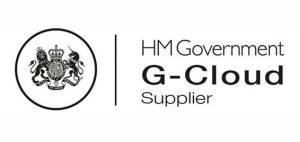

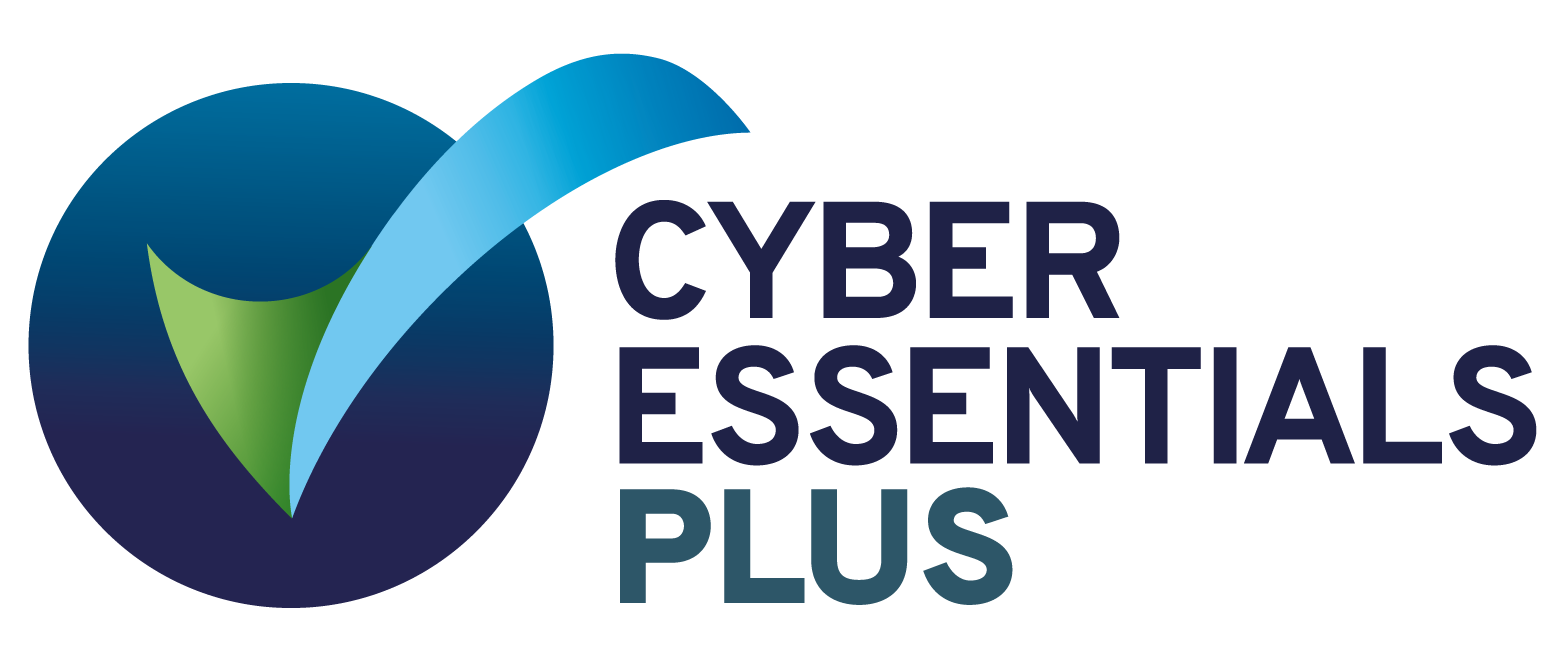
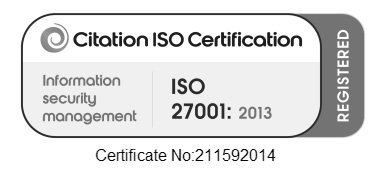
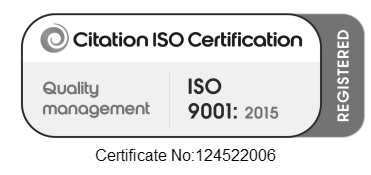
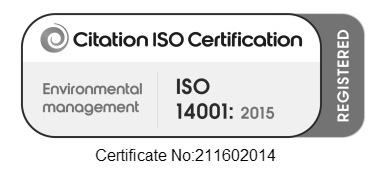
Central Networks are a strategic technology partner. Excellent technology is a given, customer service, trust and long-term relationships are what drive our business. We support CEOs, Heads of IT, IT technicians and transformation directors to ensure technology provides an edge to their organisations.
Company No: 02604843
VAT: GB 562 6919 13